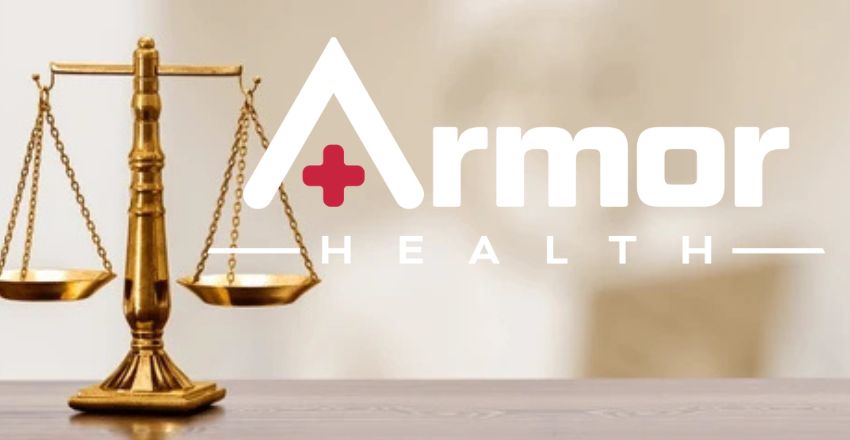Armor Correctional Health Services Bankruptcies – Legal, Ethical, Healthcare Implications!
Armor Correctional Health Services, once a major provider of inmate healthcare services in the United States, has faced significant financial and legal challenges over the years. Its bankruptcies are not just a tale of financial mismanagement but also raise deeper questions about the ethics and accountability of privatized prison healthcare. In this comprehensive article, we explore the causes and consequences of Armor’s bankruptcies, its role in the correctional healthcare industry, and what this means for the future of privatized inmate care.
Understanding Armor Correctional Health Services:

Founded in 2004, Armor Correctional Health Services (ACHS) was contracted to provide medical, mental health, and dental services to inmates in jails and prisons across several U.S. states. The company’s mission was to offer comprehensive, cost-effective healthcare solutions in correctional facilities. However, Armor’s operational history has been marred by lawsuits, negligence claims, and increasing scrutiny from both public and private watchdogs.
The Rise and Fall: Timeline of Key Events
Expansion Years
During the 2000s and early 2010s, Armor expanded rapidly, signing multimillion-dollar contracts with counties and states including Florida, Wisconsin, New York, and Texas. This growth was fueled by a trend toward privatization of prison healthcare, aimed at reducing state expenditures.
Mounting Legal Challenges
By 2015, Armor began to face a growing number of wrongful death lawsuits and negligence claims. Several high-profile inmate deaths, allegedly resulting from poor care or lack of timely medical intervention, brought the company into the spotlight. Armor faced allegations of:
- Failing to provide adequate medical treatment
- Understaffing of facilities
- Poor training of personnel
- Ignoring critical medical symptoms in inmates
Bankruptcy Filings
These legal pressures and mounting settlement costs eventually led Armor to seek Chapter 11 bankruptcy protection, allowing the company to reorganize its finances while continuing limited operations. However, in some jurisdictions, Armor began losing contracts and facing criminal charges, including charges of falsifying records.
Also Read: Tenet Health Login – Secure Access and Patient Experience!
Causes of Armor Correctional Health Services’ Bankruptcies:
1. Legal Settlements and Judgments
The most direct financial burden on Armor stemmed from numerous lawsuits. Some counties were forced to pay large settlements related to inmate deaths and injuries, many of which were attributed to Armor’s staff or policies. In certain cases, Armor had to indemnify local governments, leading to heavy financial losses.
2. Reputational Damage and Lost Contracts
As more stories of alleged medical neglect surfaced, county governments began cutting ties with Armor. This loss of contracts meant the company lost its primary revenue streams in some of its biggest markets, making it difficult to recover.
3. Criminal Investigations and Fines
In several jurisdictions, investigations into falsified medical records and willful negligence led to criminal indictments of individual employees and fines levied against the corporation itself. These additional costs and the distraction of legal defense further drained resources.
4. Failure to Adapt to Healthcare Standards
Armor reportedly failed to maintain modern healthcare standards required for correctional facilities. This included poor electronic health record (EHR) management, outdated protocols, and a lack of proactive health screenings—elements critical in such vulnerable populations.
Ethical and Systemic Implications:

Armor’s bankruptcies reflect a broader issue in the U.S. criminal justice and healthcare systems—the dangers of privatized correctional healthcare without stringent oversight.
Ethical Questions Raised:
- Profit vs. Patient Care: When a private company is paid a flat fee per inmate, it may be incentivized to minimize services to maximize profit.
- Accountability: With private contractors, it becomes harder for the public to trace responsibility and demand transparency.
- Equity in Healthcare: Inmates, who are entirely dependent on institutional care, may suffer disproportionately when contractors cut corners.
The Aftermath: Who Filled the Void?
Following Armor’s bankruptcy proceedings and contract terminations, many local governments turned to other providers such as Wellpath or NaphCare, or in some cases, reverted to public health departments. However, these transitions are rarely smooth and often come with their own sets of challenges and costs.
Broader Impact on the Correctional Healthcare Industry:
Armor’s bankruptcy has served as a cautionary tale for governments contracting with private health providers. It has prompted:
- Stricter Contract Oversight: Counties are now more likely to include stronger performance benchmarks and penalty clauses.
- Public Pressure for Transparency: There is increasing demand for public access to contractor performance reports and inmate health outcomes.
- Policy Discussions: Legislators are revisiting the model of privatized correctional healthcare, with some advocating for a return to state-managed services.
What Can Be Learned from Armor’s Downfall?
- Transparency and Oversight Matter: Private healthcare providers in correctional facilities must be held to rigorous standards.
- Public Contracts Must Prioritize Health: Cost-saving should never override humane treatment.
- Need for Comprehensive Reform: Armor’s bankruptcy is part of a pattern that signals the urgent need for systemic reform in the intersection of criminal justice and healthcare.
FAQ’s:
1. What caused Armor Correctional Health Services to go bankrupt?
Armor faced overwhelming legal costs, lost government contracts, and reputational damage due to multiple lawsuits alleging medical neglect and malpractice in correctional facilities.
2. What type of bankruptcy did Armor file for?
Armor filed for Chapter 11 bankruptcy, which allows a company to reorganize and continue limited operations while restructuring its debts.
3. Did inmate deaths contribute to the bankruptcy?
Yes. Numerous inmate deaths linked to alleged medical negligence led to high-profile lawsuits and significant settlements that financially impacted Armor.
4. Are private prison healthcare providers regulated?
Yes, but regulation varies widely by state. Oversight has historically been inconsistent, which contributed to the issues Armor faced.
5. Did Armor operate in multiple states?
Yes, Armor provided services in several U.S. states including Florida, New York, and Wisconsin before many of these contracts were canceled.
6. Who replaced Armor after the bankruptcy?
Providers such as Wellpath, NaphCare, and in some cases, public health departments took over inmate healthcare in jurisdictions previously served by Armor.
7. Was Armor found guilty of any crimes?
In some jurisdictions, Armor and its employees faced criminal charges, including falsification of medical records and neglect.
8. Did taxpayers have to cover any of Armor’s liabilities?
In some cases, local governments were forced to pay settlements when Armor could not or when the jurisdiction had to step in after a failed contract.
Closing Thoughts:
The bankruptcies of Armor Correctional Health Services are not just a financial event—they are a reflection of the ethical, operational, and legal shortcomings of privatized correctional healthcare. While Armor may be one of the most well-known examples, the issues it embodies are systemic and ongoing. Reform, transparency, and accountability must be at the center of future solutions to protect the rights and health of incarcerated individuals.
Read More:






